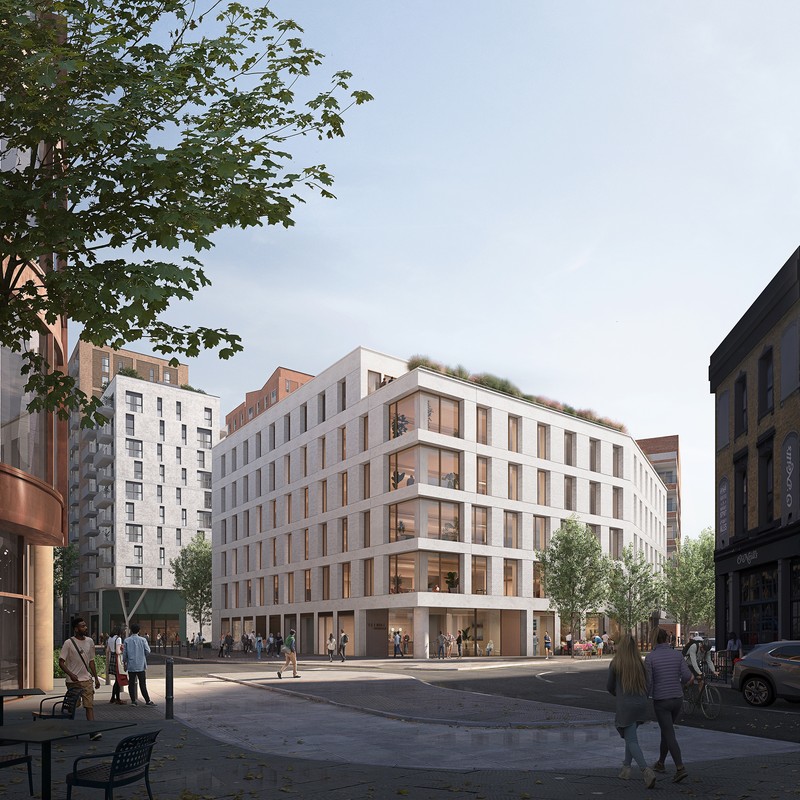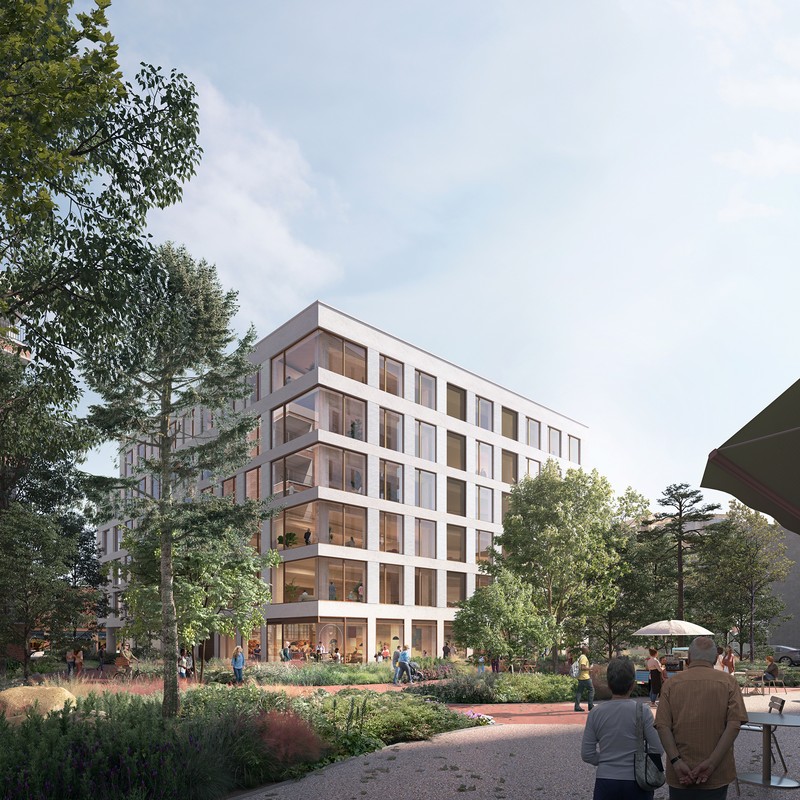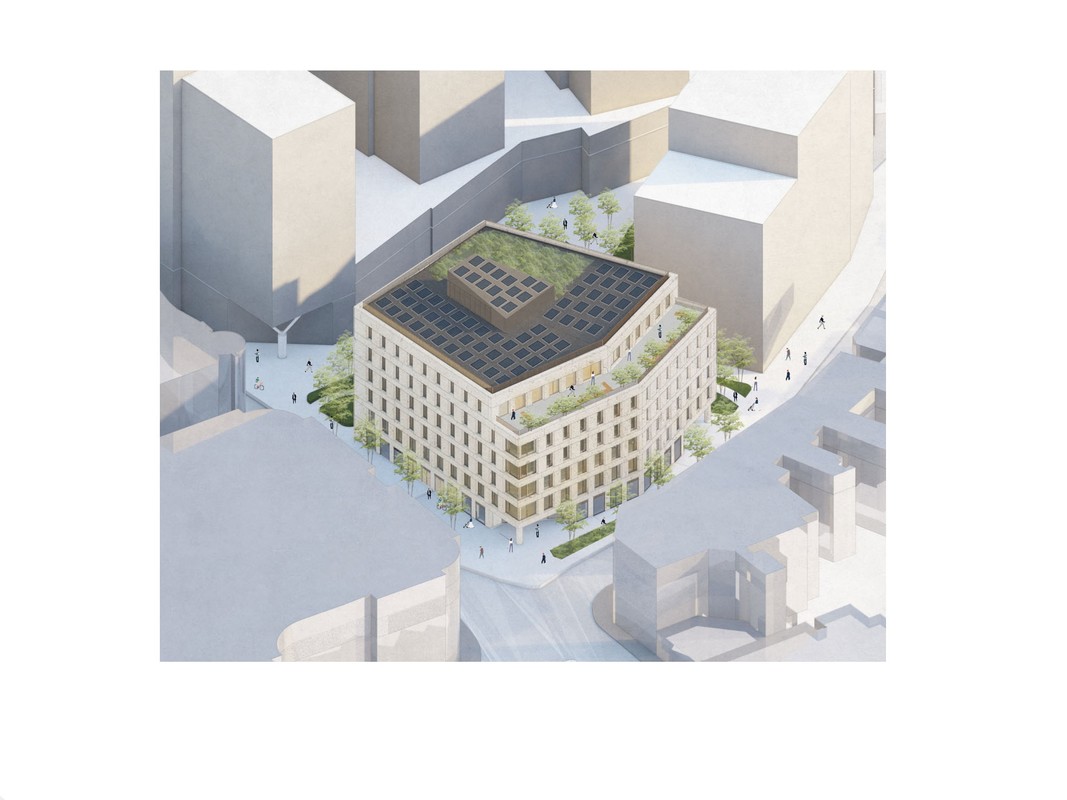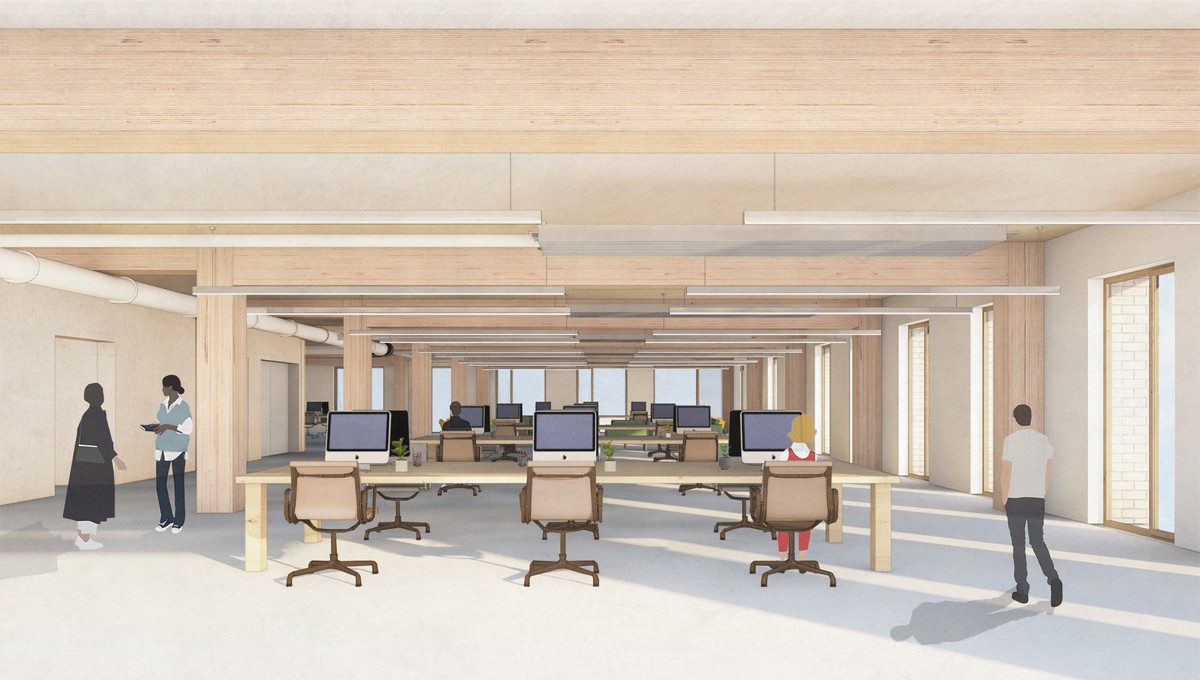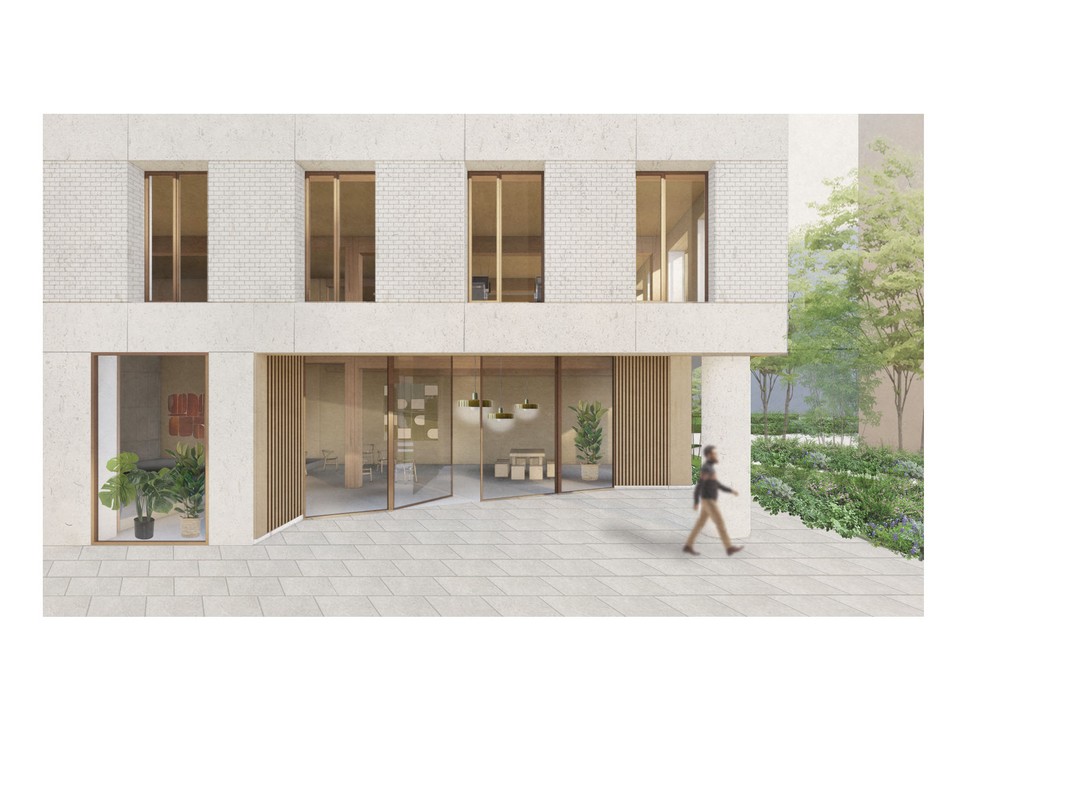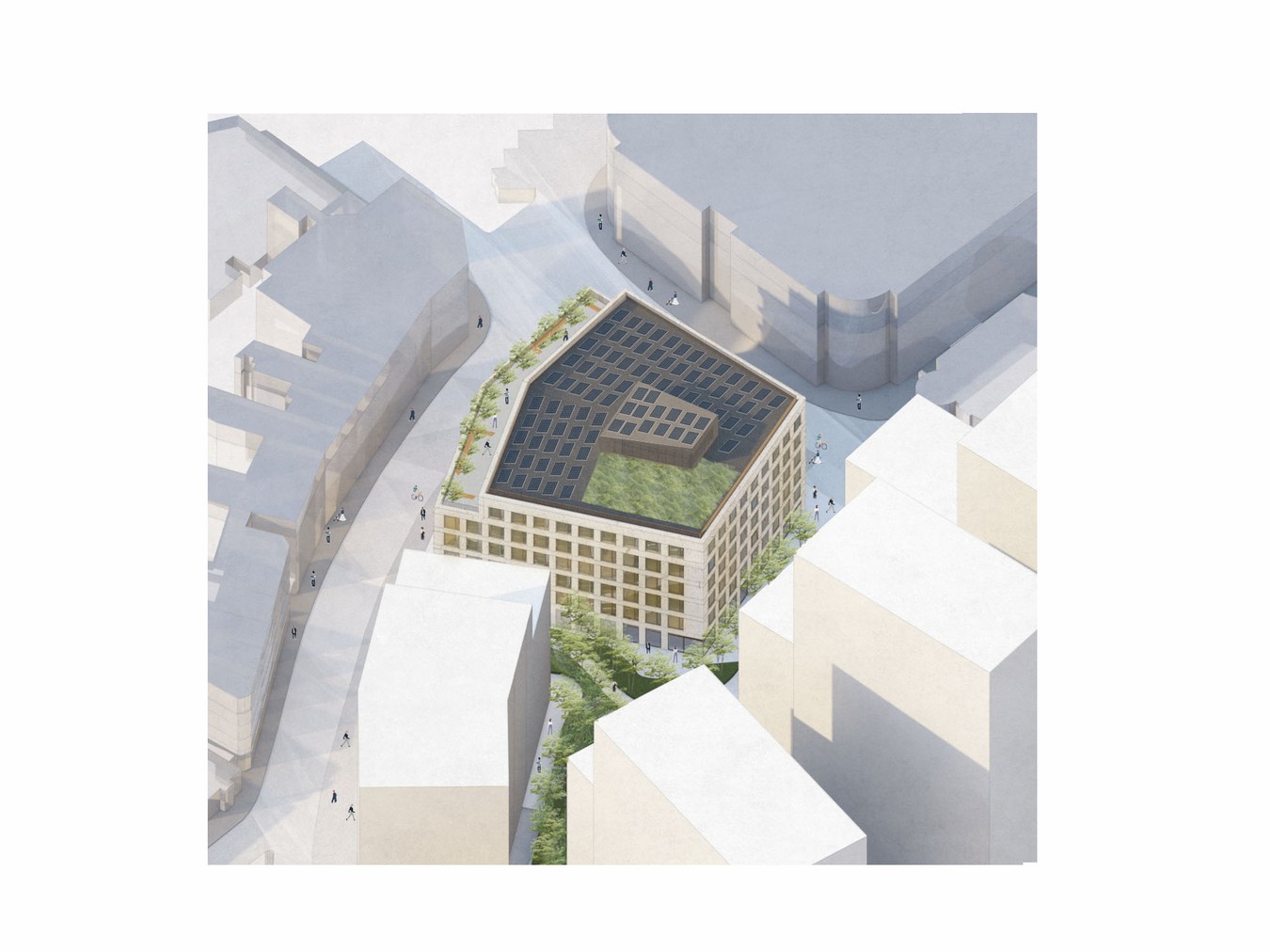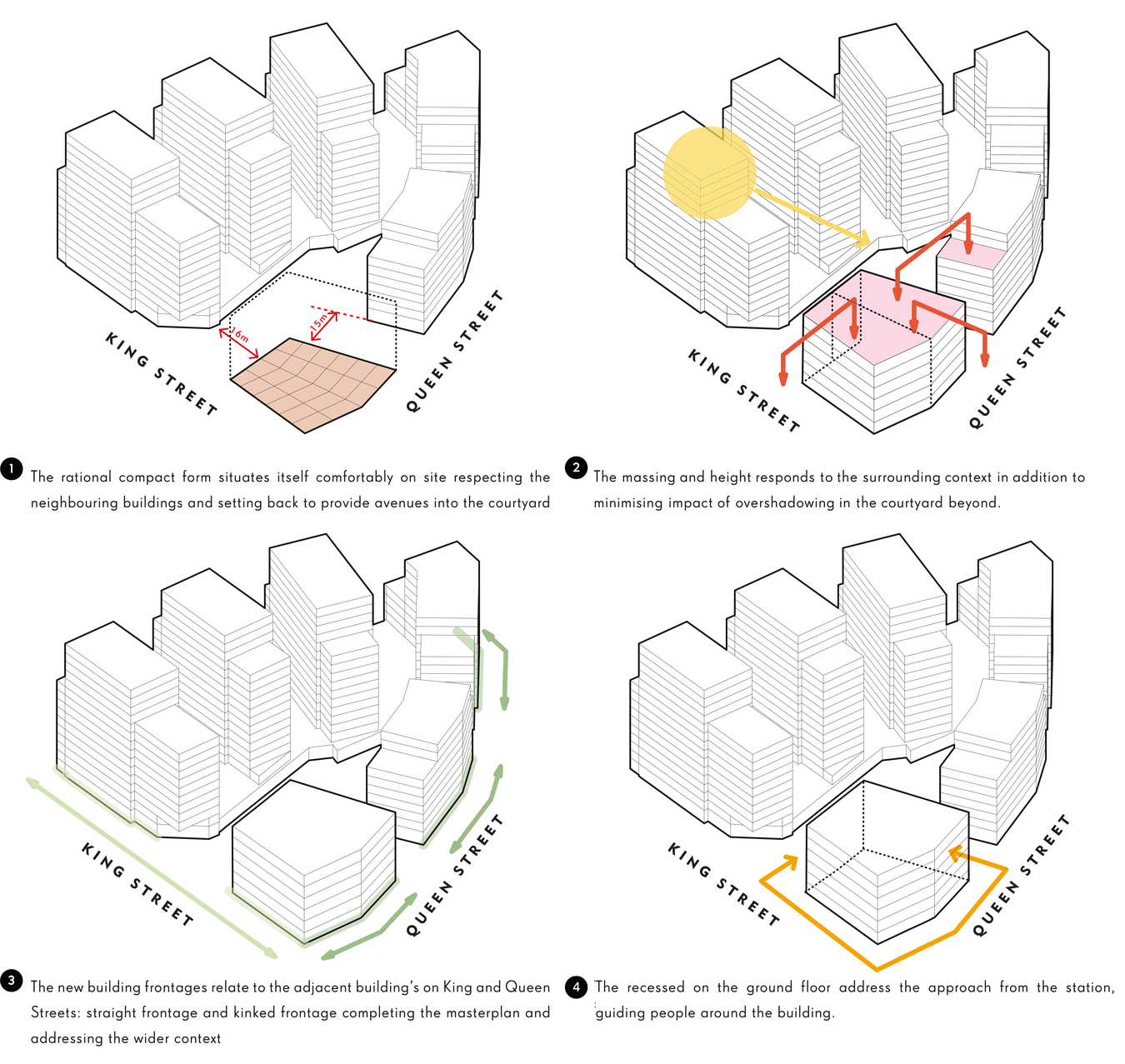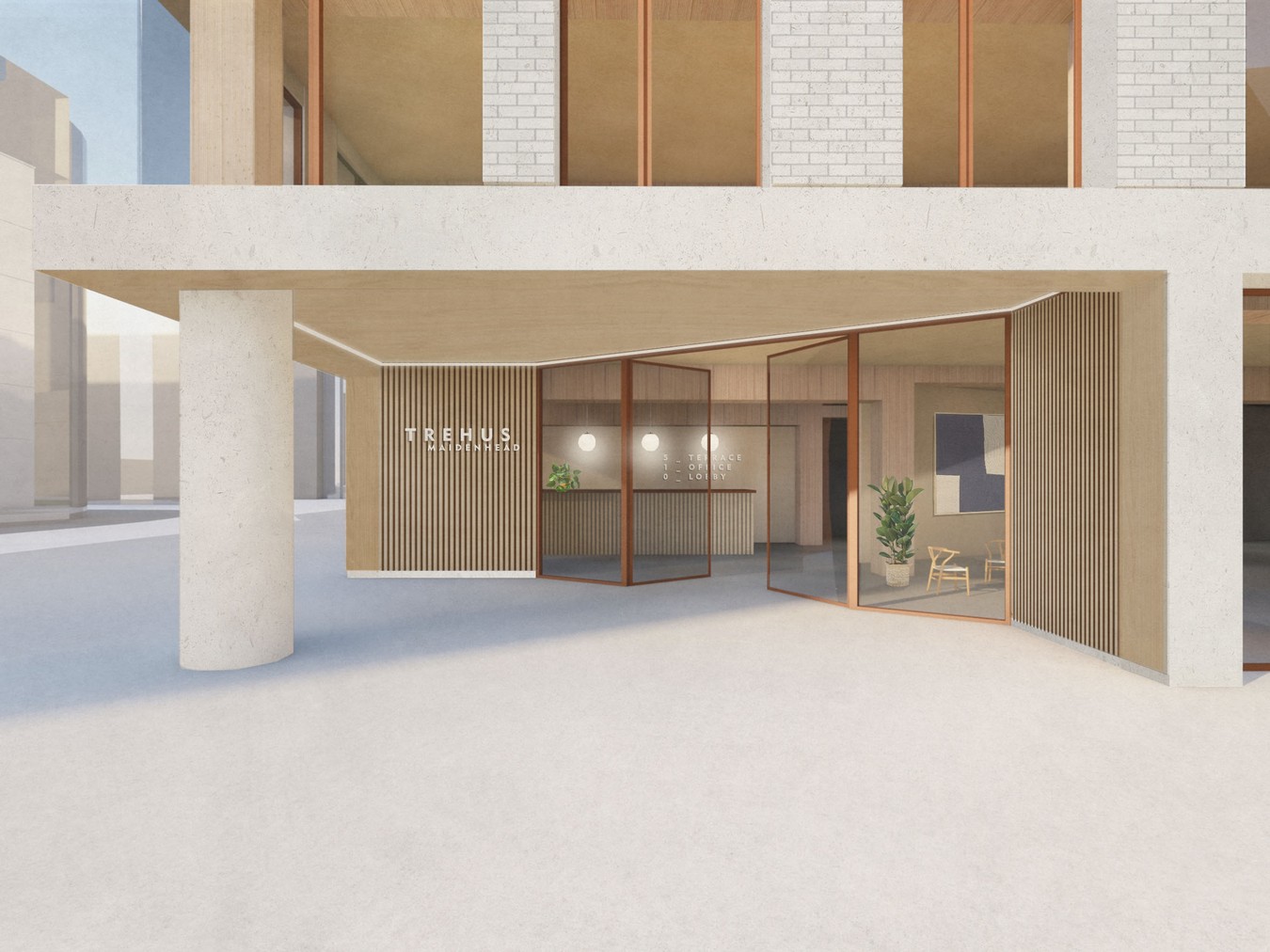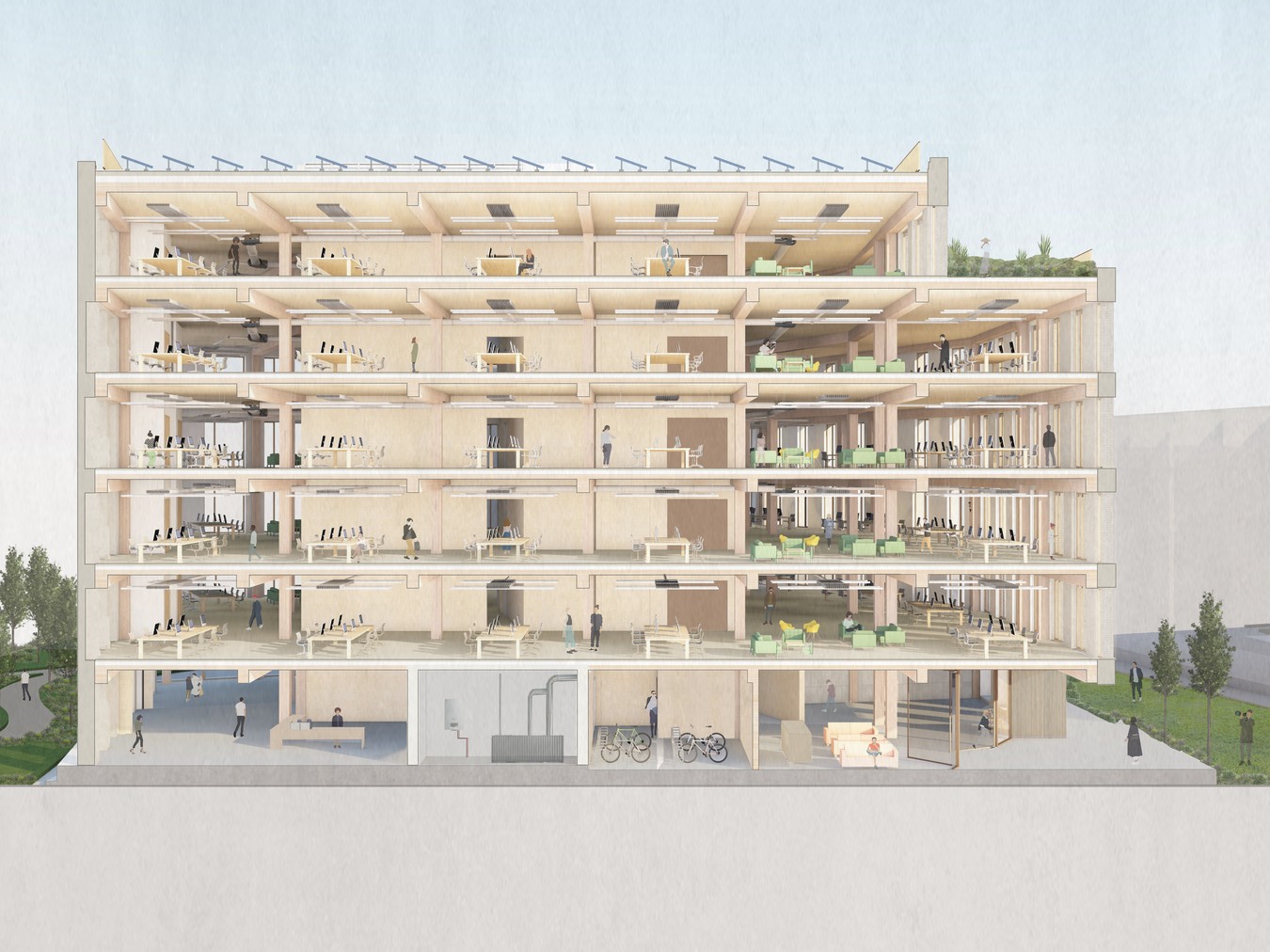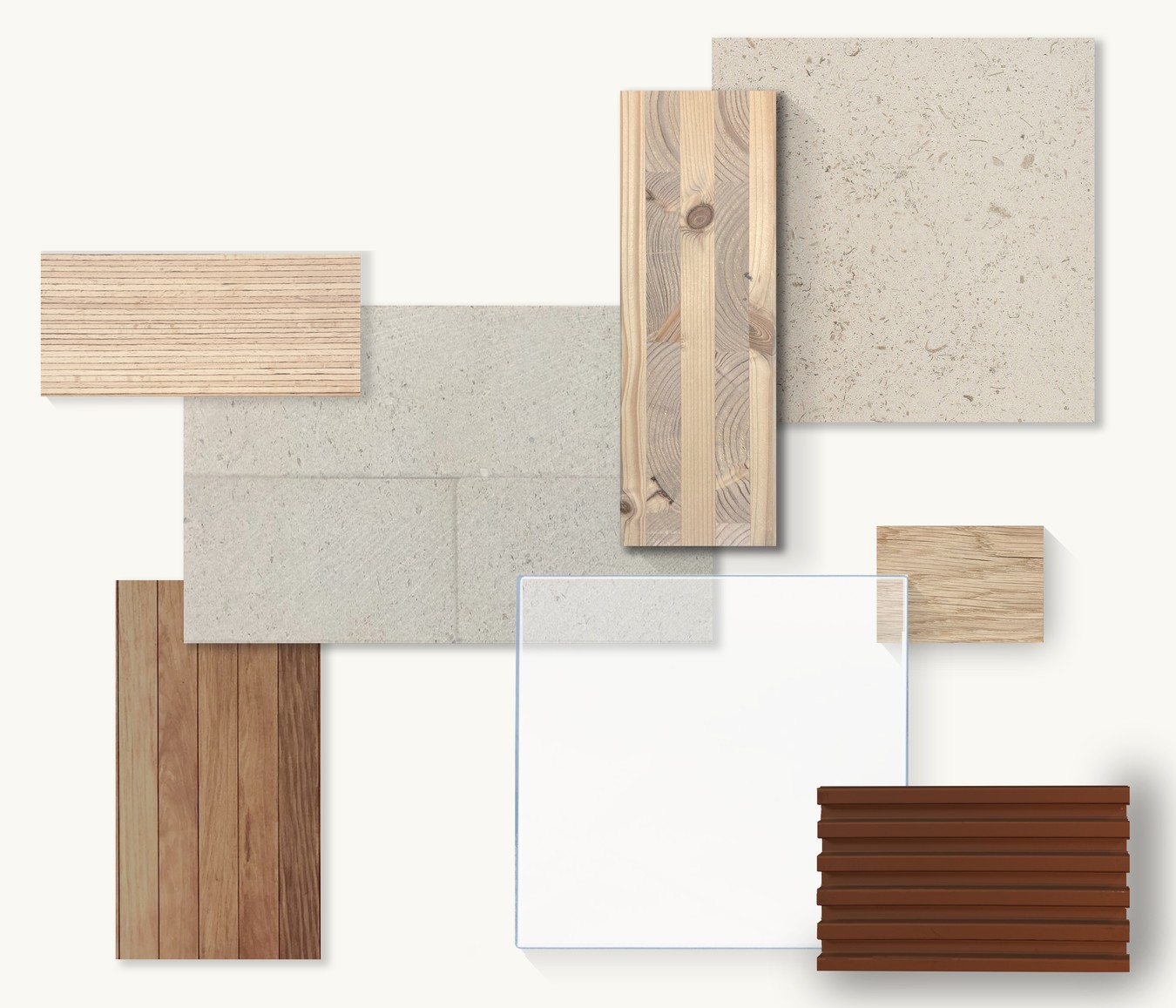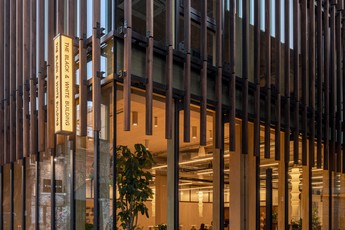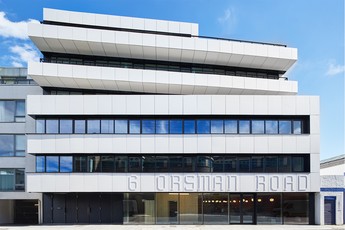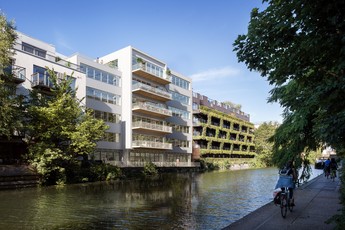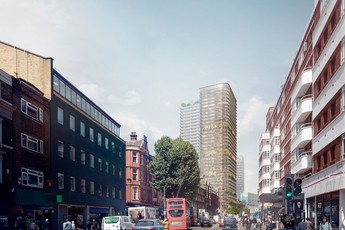One Maidenhead
A truly sustainable, future-proofed and contextual office building
Location
Maidenhead
Status
Consented
December 2023
RIBA workstages
Concept to Planning
The building will be a civic addition to Maidenhead’s urban grain, adaptable to a changing climate and capable of meeting the changing needs of end users through the flexible and adaptable design. Our aim is to provide a fair, democratic and inclusive office building now and into the future.
The building will harmoniously integrate with its surrounding historical and evolving environment and local context. The building’s form is derived predominantly by responding to the immediate context whilst also maintaining an efficient structure and floor plan, minimising form factor. At GF + 5 storeys the building responds to the lower context to the south whilst maintaining the rhythm of setbacks on the immediate site and ensuring overshadowing of the public realm behind is kept to a minimum.
The footprint itself encourages a fluid transition around the building and into the garden from both King Street and Queen Street, while relating to the street frontages along those two prominent routes. Further articulation of the ground floor through the use of colonnades, setbacks and chamfers have been investigated as a means of encouraging pedestrian flows around the building and providing protection from the elements.
The deliberate choices made in terms of building height, orientation, glazing, and ventilation have the potential to greatly reduce energy consumption, enhance indoor comfort, and lessen the environmental footprint of the development. Through these considerations, the project aligns itself with the principles of sustainable design in the borough and contributing positively the well-being of its occupants but also to minimise the impact of the development on the surrounding area and maximise the daylight within central courtyard of the scheme.
The building is south facing and consists of full height glazing to each facade. With no immediate adjacent buildings this allows for the scheme to benefit from cross ventilation and large amounts of daylight. The window sizes have been parametrically designed to ensure the optimum balance between daylighting and solar gain.
Natural stone is proposed as a cladding material - an excellent way to further reduce embodied carbon. The stone we propose to use is a relatively small size and would otherwise be considered a waste product from the quarry making materially efficient. A lime-based mortar will be used to lay the brick making it easy to demount at the end of the life of the building. Other facade materials were considered such as powder coated aluminium cladding and brick. Both these products are made using energy from fossil fuels.
The building will be an exemplar of an economically and environmentally sustainable office/mixed use development. It optimises flexibility and adaptability and achieves low levels of energy in use and embodied carbon.
